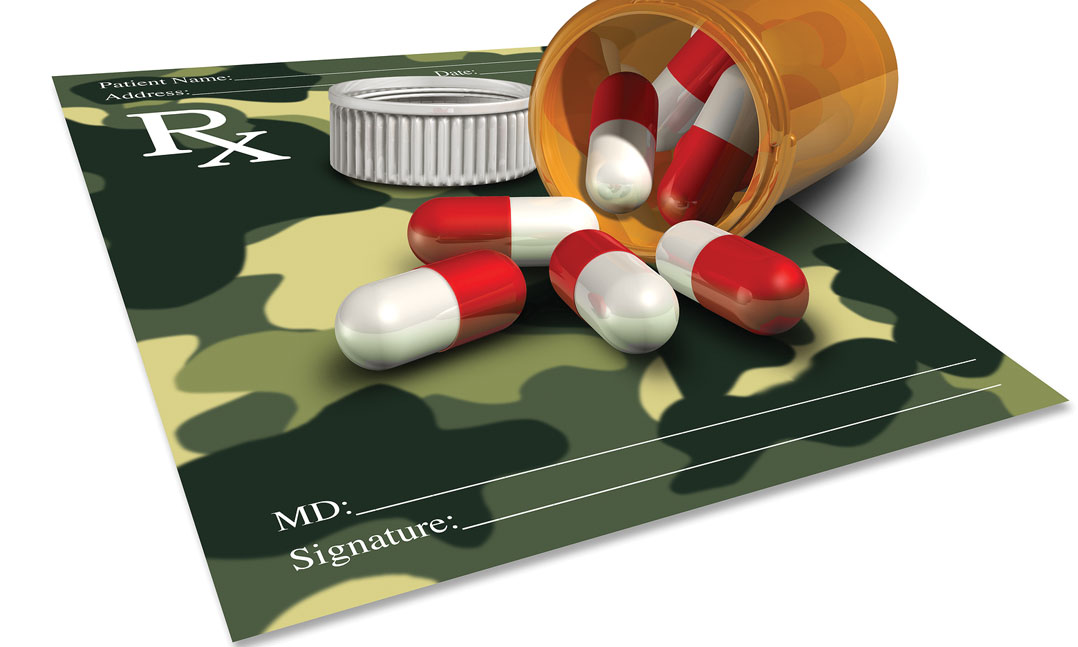VA is on the front lines of a war that exhibits few signs of resolution. In 2017, VA treated more than a half-million veterans for a slew of drug-related problems. The prime culprits, alcohol and tobacco, are legal on a federal level.
“Therefore, more veterans have become addicted to them,” said Dr. Karen Drexler, VA’s national mental health program director for substance abuse disorders.
 Tobacco and alcohol can kill you slowly. A more dramatic and, possibly, instant form of death is the product of opioids, the abuse of which can exact a deadly stranglehold on users.
Tobacco and alcohol can kill you slowly. A more dramatic and, possibly, instant form of death is the product of opioids, the abuse of which can exact a deadly stranglehold on users.
Within the VA system alone, Drexler said they track more than 64,000 veterans with opioid disorders. She added that the prevalence of the painkillers is alarming.
“We know veterans, compared with the general population, are at greater risk of overdose and death,” she said. “We are very concerned about the dramatic rise in opioid use disorder (OUD).”
VA’s tally of OUD has more than doubled since 2002.
Fighting Back
The roster of opioids is long and potentially deadly: hydrocodone, oxycodone, morphine, fentanyl, methadone, codeine, tramadol, oxymorphone and hydromorphone. These drugs fall into one of two categories: prescription medications such as hydrocodone (a.k.a., Vicodin®) that are usually used to treat pain, and illegal drugs, such as heroin.
VA says OUD develops over time. It is neither a choice nor a weakness. It’s a brain disease, one that calls for timely treatment, just like other diseases such as diabetes and high blood pressure.
Despite the publicity OUD has garnered over the past few years, myths persist, such as:
- Opioids are effective for the long-term management of pain.
- Developing OUD is a choice.
- Heroin is the only opioid that can trigger OUD.
- People with OUD will never recover.
All of these assertions are false. Physicians know opioids are not effective for long-term pain management and that patients can develop the disorder from opioids, even those prescribed for pain.
“For OUD, we strongly recommend treatment with medication,” Drexler said. For example, she noted that methadone, when administered through an opioid treatment program, can be effective. Buprenorphine, when combined with naloxone, also works, as does injectable naltrexone.
Getting Help
If you think that you or someone you know has OUD, get help and get it fast. Some signs to look for include:
- A craving and strong urge to use.
- Difficulties with work, relationships and everyday activities.
- The realization that the drug you’re using is hard to control — even when it hurts you.
Drexler said most veterans who meet the criteria for a diagnosis of OUD don’t get treatment.
“Part of it is denial, such as a veteran’s contention that, ‘It’s not that bad yet,’” she said. “But, part of it is not knowing that effective help is available.”
If you’re experiencing any of these symptoms, or know a vet who is, call VA’s Veterans Crisis Line at 1-800-273-8255, Press 1.
This article is featured in the February 2019 issue of VFW magazine, and was written by Jerome Greer Chandler. Chandler is a member of VFW’s Department of Alabama. The Vietnam War vet served as a medic with D Co., 2nd Bn., 501st Inf., 101st Abn. Div. in 1970. He is a former assistant professor at Jacksonville State University in Alabama.